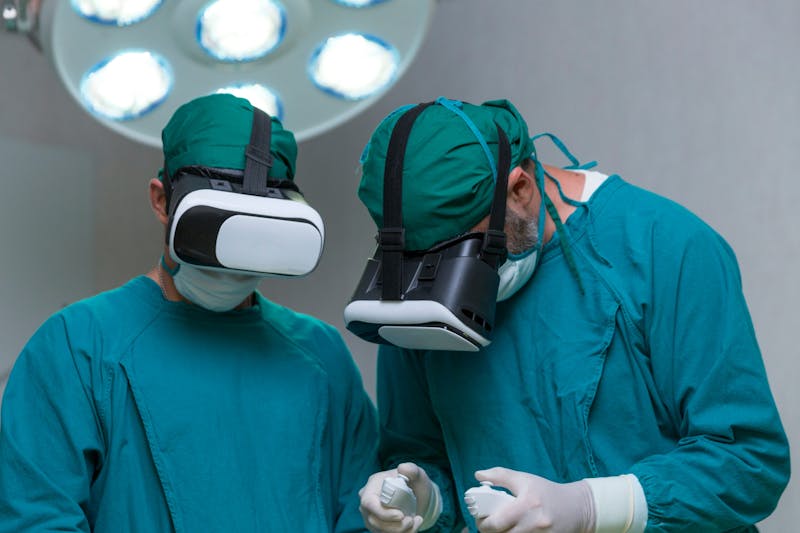
There is some 3-D technology and Plastic Surgery that has been around for quite some time. The best example of this is the surgical simulators for breast surgery. They have gotten exponentially better and I are now able to show very accurate before and Afters for many procedures. For example, a patient coming in for a breast reduction or lift, can now see the expected result in a 3-D image within minutes of taking their photographs in the office. The same is also true for breast augmentation or even breast augmentation and a lift. Patient can try on different implants in different sizes and different profiles to really taper the result to exactly what they’re looking for. We have this technology in our office and use it quite frequently. The Vectra ® system from Canfield is the one we have in our office.. Crisalix is another example of a system they can perform similar functions. For some patients, it really helps put them at ease that they’re going to achieve exactly what they want in terms of results from the surgery. For others it’s just an ad benefit of the consult.
And then there is more of the emerging 3-D technology and Plastic Surgery. For the most part, this falls into two broad categories. There is the preoperative planning 3-D technology. This is exactly what you were talking about. They take your pictures and then print a 3-D image of your face, or at least of your nose. Then they simulate the surgery in the computer with you to help guide them as the result you’re looking for, and then they print your new nose or new face. Some surgeons find that this is very helpful in their preoperative planning before surgery. I think patients to benefit from this as again this is a concrete and very real way for them to see what they might be able to expect for results. It also allows their surgeon to communicate with them and help explain what realistic results are and manage expectations.
Another example is preoperative imaging where they look for the blood vessels that will be used for breast reconstruction. I personally haven’t found it to be that useful as Surgery is an art and you need to be flexible. Regardless of what the 3-D printed model shows, you put the time of surgery I find vessels that look better than the ones the computer predicted, I like most surgeons would use the best vessels, and not the ones that computer predicted.
3-D printed models
The other broad categories in 3-D technology and Plastic Surgery is the 3-D printed models that will actually be used in the surgical procedure itself. This is certainly the most exciting and most dynamic field. Think 3-D printed replacement parts. For example, if a baby is born without one ear, or someone has a trauma and loses an ear, the surgeon 3-D scan the remaining ear, print a construct that will create a match, only in mirror, image and then use that 3-D printed construct to re-create a new year. Admittedly, this is just the structural part of the ear. It still needs to be covered with tissue with a good blood supply, but that is well within the realm of Plastic Surgery. This type of reconstruction is actually quite common. Another example would be 3-D printed bone to replace a missing or damaged piece of bone for example, in an arm or a leg. Or even a portion of a skull. 10 years ago, it was still strictly fiction, but human trials are already underway of a 3-D printed construct they can be used for breast augmentation that does not include a silicone gel breast implant. Essentially a lattice structure is implanted into the breast, and the patient’s own tissue grows into it thereby enlarging the breast.
Some Final thoughts.
Pros: there’s definitely a lot of benefit to the patient. 3-D images and 3-D printed models really help patients to gain confidence that they’re going to be able to achieve the results they’re looking for. Also allows surgeons to work with the models as part of the preoperative surgical planning. And the biggest pro is for the 3-D printed replacement parts. That is a really exciting new frontier. The next 10 years will see some rapid and really quite fascinating developments in this field.
Cons: there’s definitely a risk of overpromising and then not being able to deliver. If either the computer software gets the expected result wrong, or the surgeon can’t quite achieve the result that the computer says they should be able to. There’s also the cost. To the surgeons: as many of these technologies are fairly expensive. To the patients: those costs in some part are going to be passed on to the patients. And there are certainly some unknowns around the 3-D printed replacement parts. It took over a decade for us to realize that textured breast implants are associated with breast, implant associated and Plastic large cell lymphoma. Will have to wait and see what the safety profile is of some of this new technology.
Alternatives: well, a board-certified plastic surgeon that has a few years of experience is most often going to be able to deliver results that meet expectations for patients for the most part. There’s always that patient physician relationship to manage expectations and make sure that those expectations are realistic. To make this a little more concrete, I think of a surgeon like Dr. Aaron Kosins in New Port Beach California (you are welcome to substitute this name for one of your New Beauty rhinoplasty surgeons) . He like many rhinoplasty surgeons, produces results on a weekly basis that are just absolutely extraordinary. And he does it all without the benefit of any 3-D printed technology.
Schedule a Consult
Please fill out our online form to learn more about the services we offer here at Tucson Plastic Surgery.

